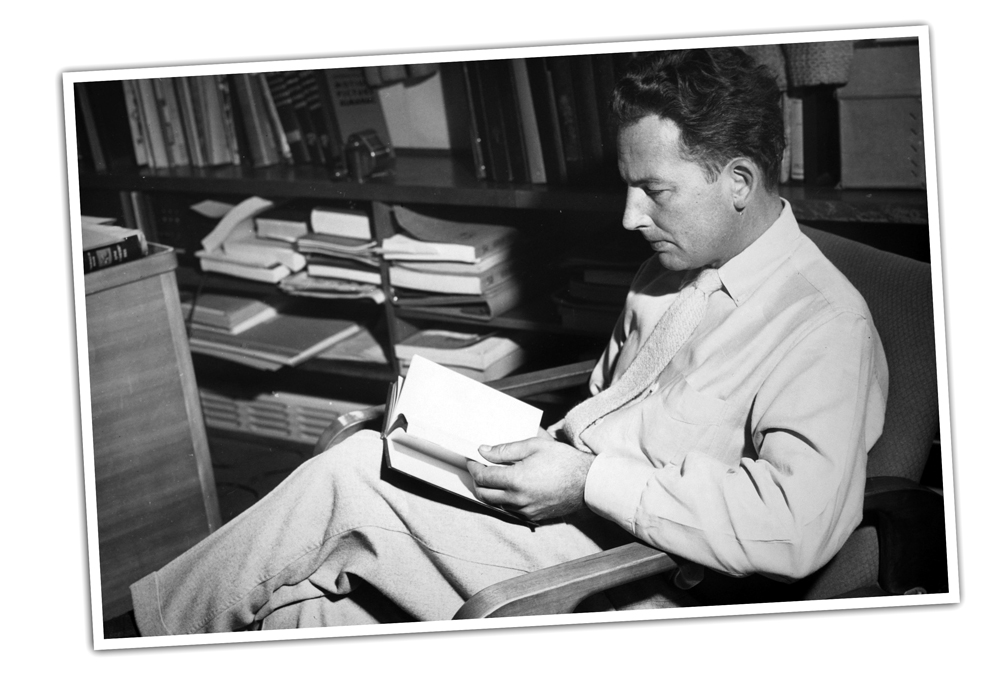Harold “Hal” Williams Adelquist was born on July 11, 1914, in Salt Lake City, Utah. His father was an accountant, and a member of a family of immigrants from Sweden who were living in Iowa, while his mother was a Utah native. Before 1920, Hal’s family moved to California, eventually settling in Los Angeles. Hal attended Los Angeles High School there and graduated from it in 1932. After graduating, he went to work for Disney Studios. In fact, he went to work there the very year he graduated. During his career at Disney, he married and had two daughters.
Hal worked in a variety of capacities during his career at Disney, including as an animator, a storyboard writer, an animation producer, and a TV producer. Most notably, he is known for helping to create and produce the iconic Mickey Mouse Club TV show. This show premiered on TV in 1955 and was created at the particular request of Walt Disney himself. On the show, Hal was credited as an associate producer, where he served as a right-hand man to producer Bill Walsh.
Prior to working on the Mickey Mouse club, Hal had been involved in numerous other high-profile projects at Disney. He was an assistant director on Snow White in 1937, though he did not receive screen credit for it. He also led training sessions for new and experienced animators, where they would work on things like character development and learning the technical skills necessary to film demos of their work. Hal was transferred to the Personnel Department at Disney in 1938. In that department, he organized employee picnics, among other, more standard personnel tasks. During the 1941 animators strike against Disney, Hal was placed in charge of all of the operations of the Disney studio personnel.

After working in Personnel for a time, Hal was promoted to the head of the Story Department. While there, he did many things, but one of the most important tasks to which he was assigned was to serve as a liaison between Walt Disney and the “Nine Old Men” animators. The animators chose Hal as their spokesperson to Walt, though his official position at the company was in studio management.
When Walt Disney decided he wanted to make the Mickey Mouse Club, his first two hires (and the most important ones) were Bill Walsh and Hal Adelquist. In their respective positions, Bill basically made the decisions on the development and production of the show (with Walt’s approval), and Hal carried out those decisions. This was actually a lot of work for Hal. He sat in on every planning meeting during the creation of the show, he developed his own ideas that Bill and Walt greenlit, he communicated decisions to people in every department on the show, managed talent scouts and casting directors in recruiting the Mouseketeers and guest stars, and even worked with the costume designer, Chuck Keehne, to develop the iconic “mouse ear” caps based on the original sketches of Roy Williams. In addition, Hal served on the editorial committee that planned and implemented the launch of Walt Disney’s Mickey Mouse Club magazine and selected and organized the technical crew who would make the show.
Hal was kind of a jack of all trades in the planning and launch of the Mickey Mouse Club. During the show’s first season, he served as production supervisor for several special episodes. After the filming was completed on the first season, Hal was asked to stage the live Mickey Mouse Club Circus shows at Disneyland. This circus was a daily show from November 25, 1955 (including the Christmas Day and New Years Day holidays) until early January 1956. This was not an easy task to do for Hal, or anyone, as it involved managing more live performers than had ever been assembled for a show at the park, and working on it was frustrating for not only Hal, but for others involved in producing the show.
It is said by many in Disney circles today that the only reason the Mickey Mouse Club made it to air on time and as a success in its first season was solely because of the efforts behind the scenes of Hal Adelquist. The pressure to get the show to air in a presentable format in just a few months fell largely on Hal, more than anyone else involved in the creation and production of the show. Hal’s nerves were said to be badly shot after this stressful experience, and he turned to drinking.
After the first season of filming was done, the production job performed by Hal was taken over by Mike Holoboff, which left Hal with only the task of finding winners for Talent Round-Up Day on the second season of the show. Hal did this job along with Jimmie Dodd, which involved going on a ten-city tour in the late spring of 1956. This job was essentially a demotion for Hal, who was resentful of it after all the hard work he’d put into making sure the show went on the air and was a success in the first place.
Because of his demotion to “talent scout,” after he’d been an assistant producer on the show, Hal argued with Walt about it, and the two of them had a falling out with each other. Hal resigned from the Disney Company after his ten-city tour in 1956, though he did write a letter asking to be re-hired not long after that. Walt turned him down, and Hal never worked for the Disney Company again. In fact, there is no evidence that he ever worked in show business again after leaving Disney.
Because of his shot nerves and drinking, Hal eventually ended up homeless in Los Angeles, making money by panhandling. A New York Times columnist tracked him down in 1977 to interview him, during which period Hal seemed to be at his lowest. Eventually, Hal moved in with his mother.
Hal was still living with his mother when he passed away on March 26, 1981, in Long Beach, California. At the time, Hal was only sixty-seven years old.







